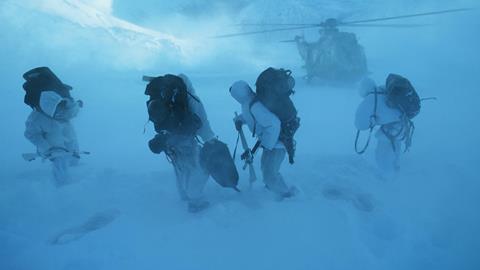Keeping the peace in far away places
International Conflict and Security Law
Laurie R. Blank
£105, Edward Elgar
★★★✩✩
Could the Arctic, or even outer space, be loci for military confrontation? And, if so, what global security apparatus is in place? Laurie R. Blank considers these risks in this wide-ranging work, encompassing conflict prevention and collective security. However, against the backdrop of the Palestinian-Israeli conflict, this volume is probably already ripe for revision.
A melting Arctic, with its corollary of accessibility and navigability, could become a source of tension. Blank, clinical professor of law at Emory University School of Law, US, considers a school of thought that the Arctic should eschew conflict because of its ‘exceptionalism’. But the Arctic Council, comprising eight Arctic states, is not an international organisation and thus is unable to enforce decisions. With Russia heightening military activity in the region, together with geostrategic rivalry, Blank posits a ‘potential for miscalculation’.
Outer space constitutes a massive challenge in imposing arms control. While the Outer Space Treaty ‘bans the orbit or stationing of nuclear weapons and other weapons of mass destruction in outer space or on celestial bodies’, verification is a key compliance tool. Doubts persist about its effectiveness. The author cites Russia’s launch of at least two satellites that ‘appear to have capabilities to capture other space objects or to launch projectiles, essentially concealing a weapon in the guise of a satellite’. In such a scenario, control of the object rests with the state that launched it. This raises the question that, in the event of an attack on a space asset, thereby triggering international law on armed conflict, would other states associated with that object also be brought into the fray?
Armed conflict laws demand that there is a military objective, so that an ‘attack on or destruction of the object must offer a definite military advantage’. A debris field, for example, could be set up in a particular orbit, thereby impeding the operation of space assets. This raises the issue of the proportionality rule, where anticipated military advantage is dwarfed by civilian casualties. If a space object supplying services to civilians is attacked, then there would be concomitant harm to civilians.
In considering Ukraine’s war with Russia, Blank expands on her point about how an object ‘must make an effective contribution to military action’. Subterranean complexes, such as under the Avostol steel plant in Mariupol, constitute key defensive loci. ‘Tunnels used to launch attacks… or as command bunkers easily meet the definition of military objective,’ writes Blank.
International terrorism, meanwhile, can emanate from myriad sources, thereby extending the possible arenas for conflict. Global treaties set out more than 50 offences, involving, for example, civil aviation, shipping or continental platforms. The current UN counter-terrorism position was shaped by 9/11. The Security Council adopted Resolution 1373 that sets out binding obligations under Chapter Vll of the UN Charter ‘to take extensive measures to prevent, contain and respond to the threat of terrorism and terrorist attacks’.
A scholarly and readable work.
Nicholas Goodman is a sub-editor at the Law Society Gazette
































No comments yet